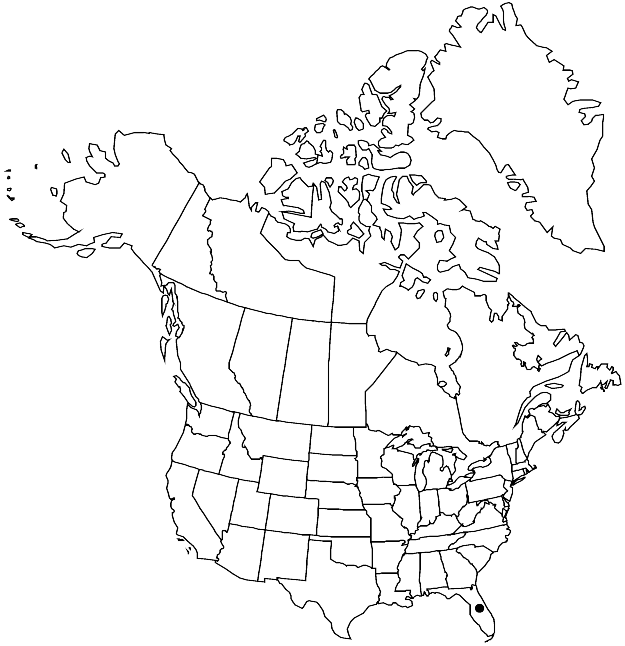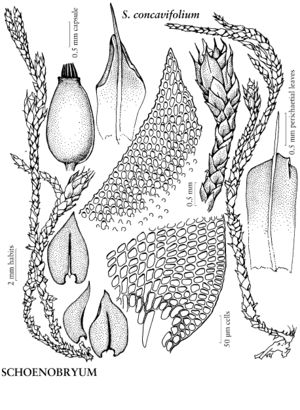Difference between revisions of "Schoenobryum concavifolium"
Mosses E. India 5: 1209. 1976.
FNA>Volume Importer |
imported>Volume Importer |
||
| (2 intermediate revisions by 2 users not shown) | |||
| Line 56: | Line 56: | ||
|publication year=1976 | |publication year=1976 | ||
|special status=Illustrated | |special status=Illustrated | ||
| − | |source xml=https:// | + | |source xml=https://bitbucket.org/aafc-mbb/fna-data-curation/src/2e0870ddd59836b60bcf96646a41e87ea5a5943a/coarse_grained_fna_xml/V28/V28_923.xml |
|genus=Schoenobryum | |genus=Schoenobryum | ||
|species=Schoenobryum concavifolium | |species=Schoenobryum concavifolium | ||
Latest revision as of 21:39, 5 November 2020
Leaves 1 mm; apex broadly acute to short-acuminate; costa sometimes laterally spurred, tip rarely 2-fid. Perichaetia with inner leaves 2–2.3 mm, awns distinct, 1/5 length expanded portion of leaf. Spores granular.
Phenology: Capsules mature Apr.
Habitat: Twigs, branches, trunks of trees, humid forests
Elevation: low elevations (0 m)
Distribution

Fla., Mexico, West Indies, Central America, South America, Asia.
Discussion
Schoenobryum concavifolium is rare in the flora area, where it is known only from Collier County in southern Florida; its presence there was undetected until recently (W. R. Buck 1994c). The plants are firm when dry and often have a shrublike aspect due to the erect, clustered branches. Terminal perichaetia give the branch apices a clublike appearance. The species is quite similar to Cryphaea filiformis but differs in its terminal perichaetia, single peristome, and the awns of perichaetial leaves that are only 1/5 the expanded portion of the leaf length. The two species have been collected growing together. In C. filiformis, also a rare moss of southern Florida, the perichaetia are lateral, the peristome is double, and the awns of the perichaetial leaves are 1/2 the expanded portion of the leaf length.
Selected References
None.
